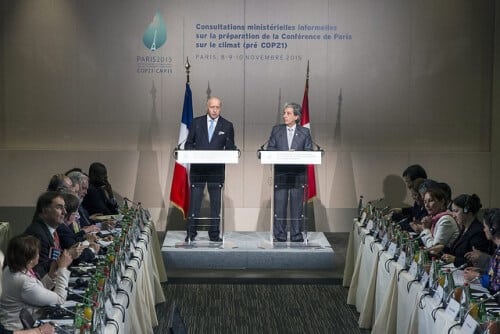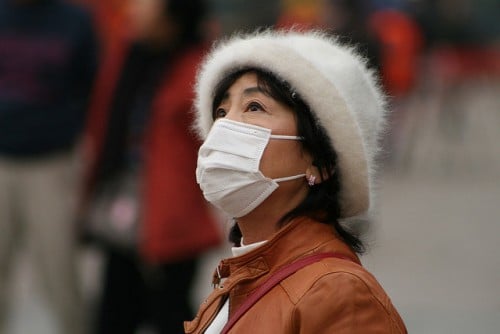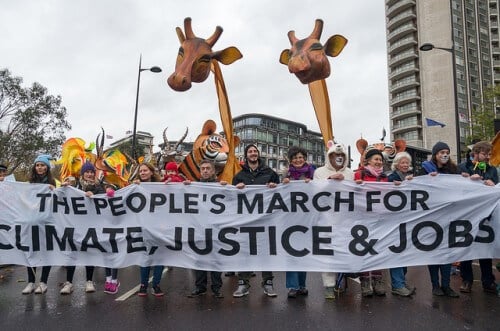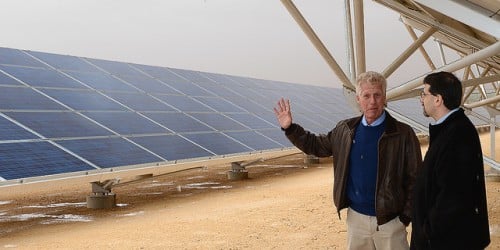The Paris climate change conference opened yesterday with great fanfare. 40 thousand participants from 195 countries know that this may be the last chance for global mobilization in the fight against climate change. Paris conference 2015: all the questions and answers
"Angle" system - news agency for science and the environment

Yesterday, the UN conference on climate change opened in Paris. In the next two weeks, delegations from 195 countries will discuss ways to deal with climate change and try to formulate a legally binding international agreement regarding the reduction of greenhouse gas emissions. After a series of more and less successful conferences in the last 20 years, it seems that the Paris conference will mark a significant milestone in the global preparation for climate change. In order to understand what will happen in Paris in the next two weeks, we present you with a guide to the conference, with all the technical details and important questions.
The road to Paris begins in Rio
The winding journey that led to the Paris Conference on climate change began at the Rio de Janeiro Conference in 1992, where the United Nations Framework Convention on Climate Change (UNFCCC) was adopted for the first time, with the goal of "reducing greenhouse gas emissions to prevent damage to the climate system." The 195 member states of the convention hold a conference (in English Conference of Parties, abbreviated as COP) every year to monitor the implementation of the convention. The conference that takes place this year in Paris is the 21st gathering of the member states, and therefore was named COP21.
The second landmark on the road to Paris was the adoption of the Kyoto Protocol in 1997, in which the member states decided to reduce emissions by five percent from the level of emissions in 1990 by the year 2012. However, developing countries such as China and India were not given specific targets for reducing emissions. Finding a mechanism that balances the reduction of emissions required from the developed countries and between the developing countries was and remains the bone of contention in the creation of a climate agreement, and the hope is that the Paris Conference will find a solution to this.
Despite the optimism, the Kyoto Protocol remains an agreement on paper only, due to the fact that it was not ratified in the US and that many countries simply did not meet the emissions target defined in it. At the same time, it has already become clear that another framework agreement is needed to replace the protocol, mainly due to the fact that China, which was defined as a developing country in the early 15s, has become a large industrialized country and a leading emitter of greenhouse gases accordingly. COP2009 held in Copenhagen in XNUMX was supposed to be the breakthrough in formulating a new international agreement that would succeed the Kyoto Protocol; But the agreement that was drawn up was not approved immediately, and when it was approved a year later it was already too late, and it was doomed to failure.
It all depends on Obama
The goal of the Paris conference that opens today is to formulate a legally binding international agreement on climate change, which will succeed in stabilizing the warming of the earth at only 2 degrees above the average temperature in the pre-industrial era. This is an ambitious goal, especially given that the Earth has already warmed 0.85 degrees since the pre-industrial era, and scientists predict that without action, the average temperature will rise 4.5 degrees from the pre-industrial era by the end of the century.
The assumption underlying the conference, and currently supported by most scientists in the world, is that the emission of greenhouse gases as a result of the burning of fossil fuels (coal, gas and oil) causes climate change and global warming, and that humans have the ability to stop this change through the reduction of greenhouse gas emissions.

The current agreements regarding the reduction of greenhouse gas emissions are expected to expire in 2020, therefore there is a need to formulate a new agreement that will determine the obligations for another ten years (until 2030), and even beyond that. The participating countries submitted ahead of time their targets for reducing greenhouse gas emissions (known as INDC - Intended Nationally Determined Contributions), each country according to its capacity and its appropriate target year, most of them around 2030. Prof. Ofira Elon from the Shmuel Namon Institute at the Technion and Haifa University, who will participate in the conference , explains that "advance commitments have been received from more than 170 countries, which cover more than 95 percent of the total emissions of greenhouse gases in the world. Unlike previous conferences, this time an emissions reduction target was not dictated from above, but each country set a target for itself according to its capabilities. This is one of the keys to the success of the conference."
Another key to the success of the conference is the active participation of the USA and China - the world leaders in greenhouse gas emissions. In November 2014, after months of secret talks, US President Barack Obama and Chinese President Xi Jinping unveiled a historic agreement to reduce the greenhouse gas emissions of the two polluting powers. The historic agreement was a turning point in the global effort to achieve a binding international agreement to reduce emissions, and gave the UN and UNFCCC member states a boost ahead of the Paris conference.
A significant part of the agreement that will be discussed in Paris is the economic support of the developed countries (and the USA in the lead) to the developing countries to help them reduce greenhouse gas emissions. In previous meetings of the COP, there was talk of a commitment to investments in the amount of 100 billion dollars every year starting in 2020 in the development of technologies for renewable energies. The big question on the agenda is where the huge sum will come from - from the various countries (that is, from the public) or from private sources? The arrangement of the economic side is critical to achieving a binding agreement in Paris and its success in the long term.
Francis will come?
COP21 will be one of the largest conferences ever held on French soil. About 40,000 people are expected to participate in the conference, which will last about two weeks, of which about 25,000 are members of the official delegations of the member states, UN agencies and non-governmental organizations. The conference will take place in a specially built conference center in La Bourget, about ten kilometers north of the center of Paris. While the conference center will be closed to the general public and where the discussions between the official delegations will take place, the public is invited to come to a special complex built adjacent to it where panels, exhibitions, film screenings and events will be held with the aim of involving the public in the global fight against climate change.
Alongside the presidents of the US and China, many other heads of state will be present at the conference, including Narendra Modi, the Prime Minister of India, which is in third place after China and the US in carbon dioxide emissions. Unlike the Copenhagen conference, where the leaders of the powers arrived only in the last two days, in Paris the leaders arrived for the traditional photo shoot and a round of talks already at the opening of the conference, hoping that this would give a boost to the talks and make them more effective. Now it is still unclear whether Pope Francis - who published a surprising statement about the importance of the fight against climate change in June and became the face of this fight - will come to Paris in person. Either way, the participants hope that on December 11, the day the conference ends, the signed agreement will be presented to the world.

on terrorism and climate change
The severe terrorist attack in Paris that happened on November 13 raised many question marks about the possibility of holding a conference with many participants and in the presence of many world leaders in the city of lights. However, the possibility of canceling the conference was not at all on the agenda for the French, who saw such cancellation as a reward for terrorism. Therefore, the conference opened as a series, although the security arrangements were tightened: about 2,800 policemen are securing the conference complex in La Brugge, and 8,000 more have been sent to increase security at the borders, for fear of terrorist infiltration. The closed and secure conference center in La Bourget is not the main headache for the French; Demonstrations and mass marches in the streets of Paris are a much easier target for terrorists, so all these gatherings were canceled by order of the police. In the end, the main victims of the tightening of security arrangements are not the participants of the conference, but the citizens of Paris and activists who wanted to protest against the conference, which they believe comes too late and offers the world too little.
And what about us?
The Israeli government adopted the Kyoto Protocol in 1998, although according to the protocol it was defined as a developing country and therefore no restrictions regarding greenhouse gas emissions applied to it. An Israeli delegation of 30 people led by the Minister of Environmental Protection at the time Gilad Erdan had already arrived at the conference in Copenhagen, who was joined towards the end of the conference by President Shimon Peres. Peres pledged on the stage of the conference to reduce emissions by 20 percent by the year 2020, a goal that was finally adopted by the Israeli government as well. The Israeli plan to reduce emissions has already reached the stage of budgeting, but was finally frozen.
The Israeli delegation to Paris will include 70 representatives from all sectors of the economy: government ministries, industry, academia, civil society, environmental organizations and more. The delegation is headed by Prime Minister Binyamin Netanyahu and will be accompanied by Environmental Protection Minister Avi Gabai, with the well-publicized struggle over approval of the gas plan in the background.

Alongside the official discussions, Israel will participate in a series of side events where it will explain its preparation for climate change. "Even though Israel has a relatively small contribution to total global emissions, it is at the forefront of technological development for reducing emissions and preparing for climate change," explains Elon. "The conference is also an economic-business invitation for Israel, where it will be able to market advanced technologies it has developed in the fields of renewable energy, energy management systems, agriculture adapted to climate change and more."
The Israeli emissions reduction target (INDC), approved by the government, is a reduction of about 25 percent of the expected greenhouse gas emissions in 2030. For this purpose, a goal was defined of producing electricity from renewable energy at a rate of at least 17 percent of all electricity consumption by 2030, reducing the total electricity consumption by 17 percent and reducing private travel by 20 percent. The Ministry of Environmental Protection is currently leading a plan to implement the goals. Israel also hopes that Paris will set the world on a new path - even if considerably late - in preparing for climate change.
More of the topic in Hayadan:

6 תגובות
"The Art of War"
Nostradamus
Coward's excuses, decide who scares you and act against them, instead of spouting your conspiracy theories here.
There is no such thing as Islam. Islam is Islam and it is one, in Israel, the USA, Pakistan... And the problem for him is not in the one who helps him.
Nostradamus
So stop sitting on your ass and typing conspiratorial comments on the science website, and go to Syria to fight the Islamism that scares you so much.
And also a way to divert and drug the multitude from the real problems, which are the Islamization of the world and the anarchy and deliberate de-modernization of the global left
The real news is that 'global warming' is the biggest scam ever right after the invention of the 'Palestinian people'